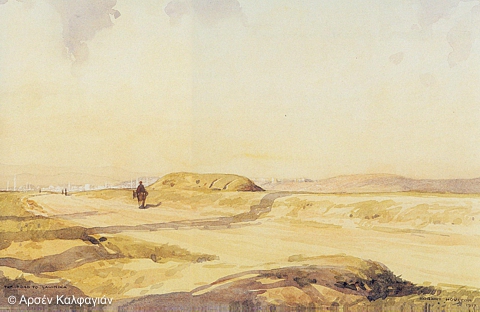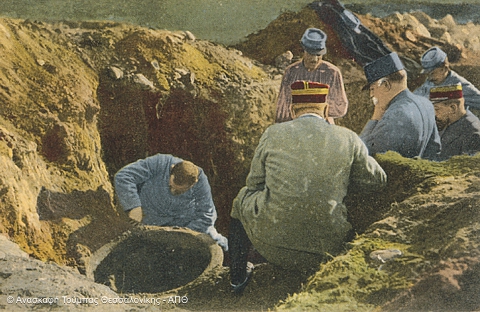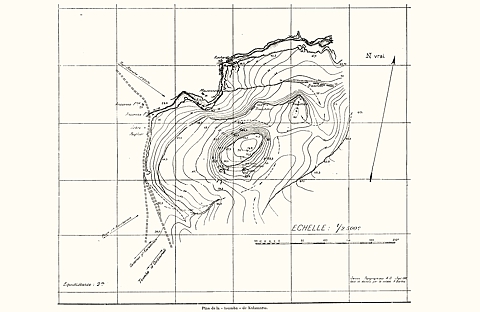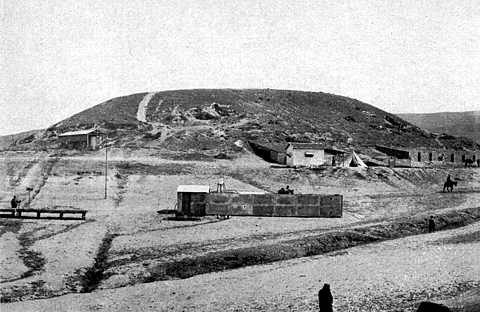History of research
"“…[it] was thought to be hiding a very important ancient tomb […] due to its size and its very distinctive shape"
The “toumba” mounds of Macedonia, as the etymology of the word shows, were long identified with tumuli that covered ancient tombs. Similarly, Thessaloniki Toumba (also known as Kalamaria Toumba because it was located outside the city walls) was thought to be hiding a very important ancient tomb ever since the 19th century, due to its size and very distinctive shape. Indeed, in 1899 Theodoros Macridy-Bey, a renowned archaeologist of the Ottoman state, conducted a preliminary excavation to unearth this tomb. He found out quickly that the imposing ellipsoidal hill at the east side of the city had been created by the successive layers of a long-term construction at this particular area, which began from prehistoric times and continued up until historical times. Specifically, the archaeological site was similar to the so-called “tells”, which had begun to be excavated in Anatolia and the Middle East in 19th century. A good example of a similar site, though more extended, is that of Troy.
Thessaloniki Toumba continued to attract researchers’ interest until World War I (1914-18), when the Thessaloniki based (English and French) troops conducted systematic archaeological researches in Thessaloniki and the wider area of Central Macedonia. The archaeological missions accompanying the troops conducted excavations, surface searches, aerial photographs and archaeological site surveying.
Among the researchers who investigated the archaeological site, the most distinguished are A.J.B. Wace, who made the first significant remarks about the dating of Thessaloniki Toumba, and L. Rey. The French geographer/archaeologist L. Rey, along with the French archaeological mission, conducted topographic surveying of prehistoric mounds, small-scaled excavations (among them is Thessaloniki Toumba in 1915) and made remarks concerning the topography, the formation processes, the duration and dating of the mounds. Apart from the distinction already made between residential and burial mounds, L. Rey also went on with the distinction between prehistoric (mounds) and historic (settlement mounds of trapezoidal form) mounds, based on their morphological characteristics. At the same time, the well-known British archaeologist E. Garner, representing British Salonika Force, conducted a limited investigation.
Later on, the search at Thessaloniki Toumba stopped until it was taken on by the School of History and Archaeology, Aristotle University of Thessaloniki.





